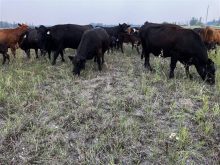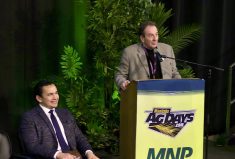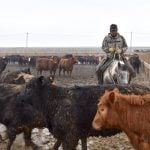“A lot of those farmers are still suffering from excess moisture from last summer.”
– CRAIG THOMSON
Manitoba farmers couldn’t seed 420,000 acres this spring to annual crops due to excess moisture, triggering $21.5 million in crop insurance payouts Agriculture Minister Rosann Wowchuk announced July 16.
That’s the third-highest number of acres unseeded because of wet conditions in the last 10 years. A record 1.5 million and 622,450 acres weren’t seeded in 2005 and 2004, respectively.
Last year, 27,579 acres weren’t seeded, according to figures from the Manitoba Agricultural Insurance Corporation’s crop insurance division.
Read Also

Three paths of rengerative agriculture
From integrating livestock to grassland financial incentives to precision grazing, Canadian farmers are searching for practical paths to marry farm resilience with profit
Cheques issued this week should reach most eligible farmers by month’s end, Craig Thomson, vice-president of insurance operations, said in an interview July 20.
Under excess moisture coverage eligible farmers can get $50 an acre for land too wet to seed, less a five per cent acreage deductible. For example, a 1,000-acre farmer would qualify for a $50 payment if he or she couldn’t seed 51 acres because they were too wet, Thomson said. (1,000 acres less 50 acres [five per cent deductible] = 1 acre x $50 = $50)
The deductible increases five per cent for those who had an excess moisture claim the year before. (Farmers can get $65 an acre excess moisture coverage by paying an additional premium.)
Crop insurance received 1,675 excess moisture claims this year. As bad as the situation is, initially there were fears it was going to be worse. By mid-June crop insurance officials estimated close to one million acres might not be seeded.
“We thought we might have up to 2,000 claims,” Thomson said. “But we had a pretty good two weeks up to June 20 (the crop insurance deadline for seeding). That was probably some of the driest, warmest weather we had this spring. A lot of those questionable acres got in close to the deadline.”
Thomson estimated three-quarters of the excess moisture claim money will go to farmers in the Interlake and eastern region. The wettest area is north of a line between Teulon and Beausejour, he said.
“A lot of those farmers are still suffering from excess moisture from last summer,” Thomson said. “They didn’t get their crops off last year and their fields were rutted up where they did. And they just had too much moisture again this spring. There’s a very high percentage of land that didn’t get seeded in there.”
Claims have come in for other parts of the province including St. Pierre, Altona, Carman and Darlingford. Some of those areas received three or four inches of rain at one time, making some fields too wet to sow.
Besides excess moisture, Manitoba farmers have had to contend with a cool spring, a late frost and below-normal temperatures, delaying crop development.Des p i t e the adverse conditions Mani toba Agr icul ture, Food and Rural Initiatives says an average crop is still possible.
Last year Manitoba farmers, on average, harvested a bumper crop, with average wheat and canola yields setting new records despite a slow start to the growing season. An extended frost-free fall is credited with making the difference. Many farmers have their fingers crossed for another open autumn.















